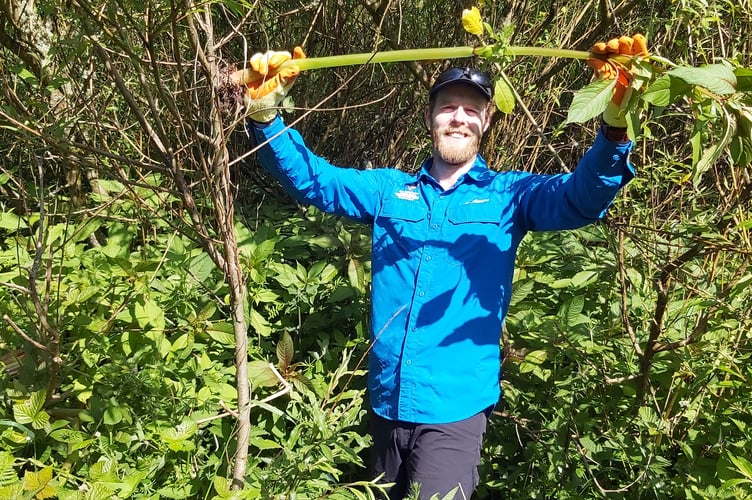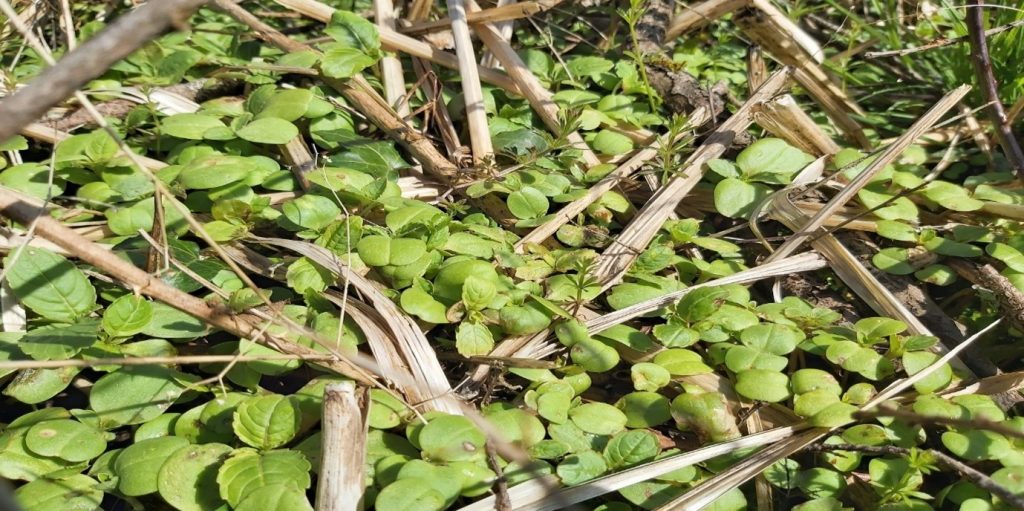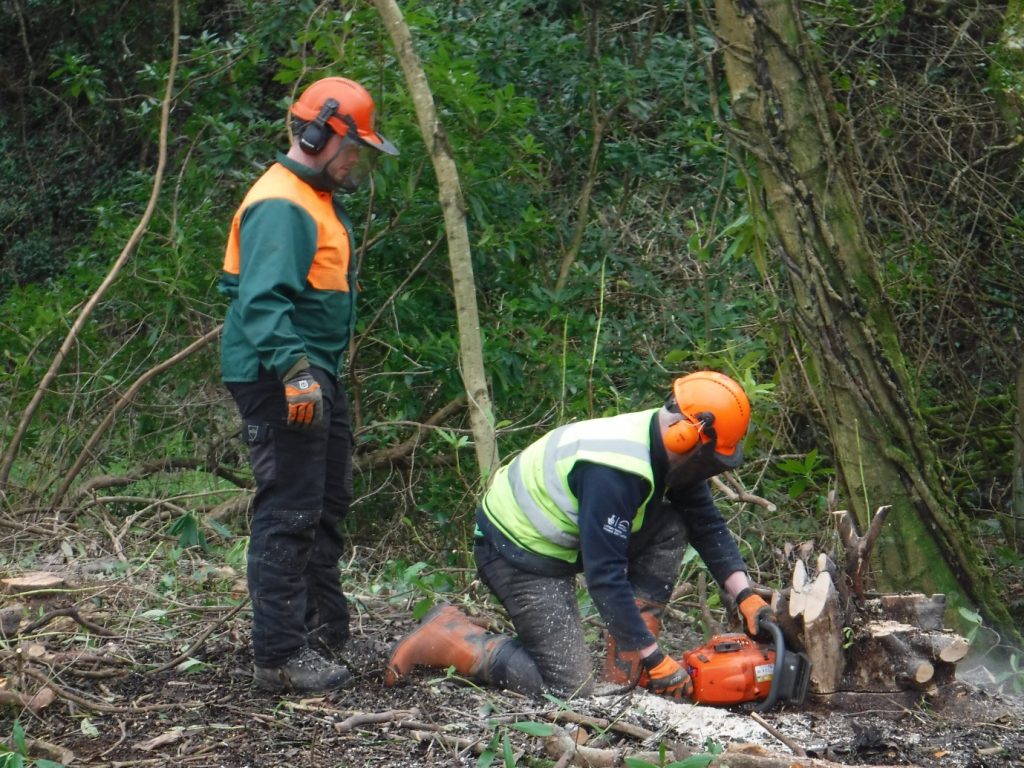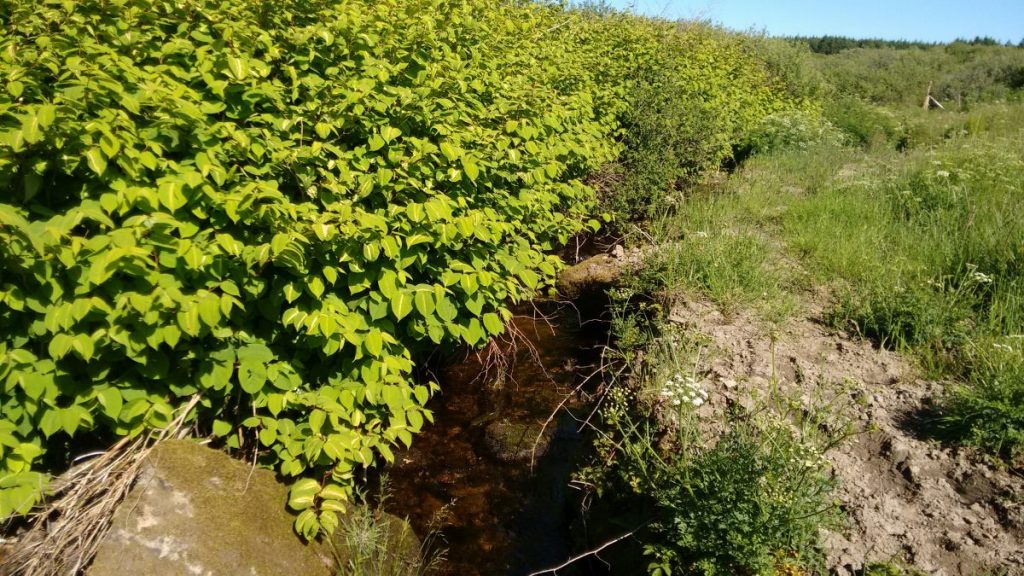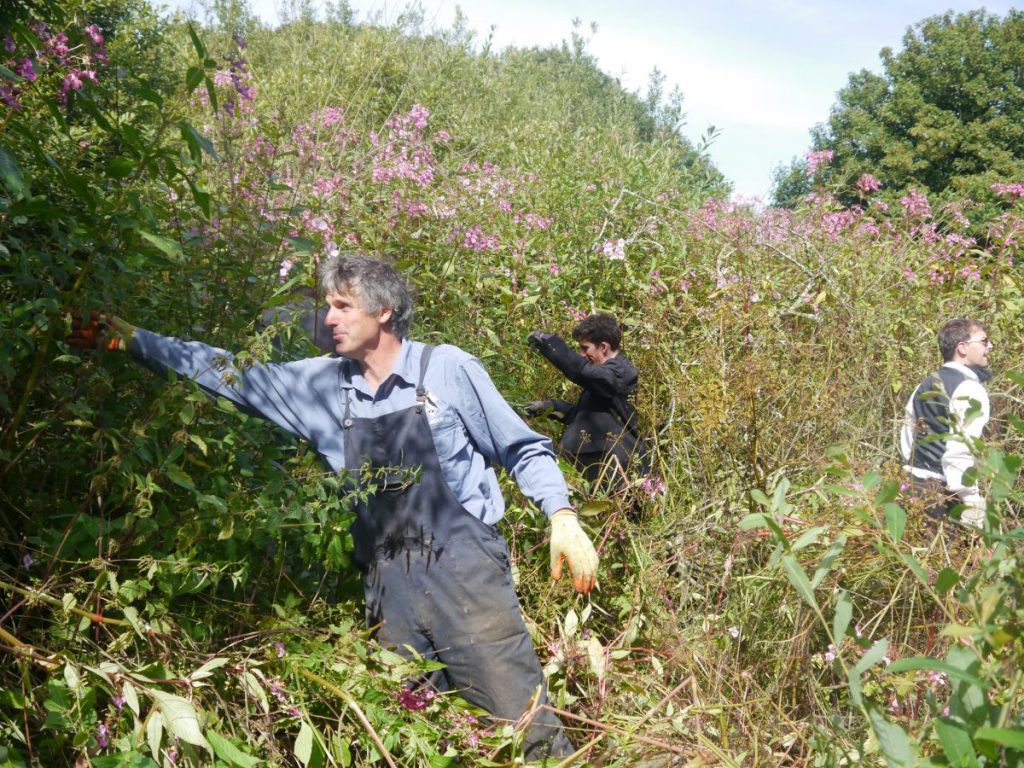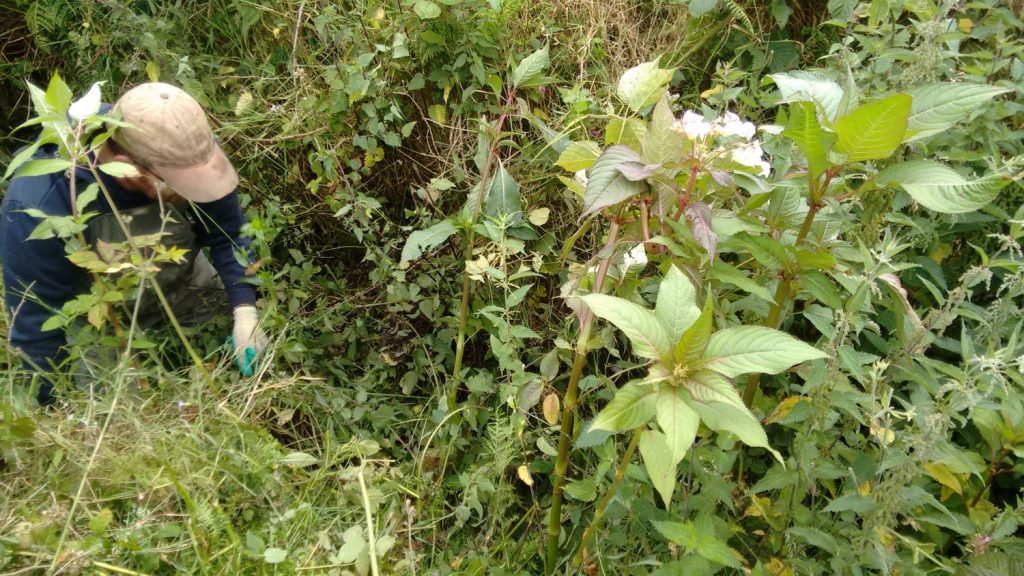Rhododendron ponticum is an evergreen, ornamental plant introduced to the UK by the Victorians in the late 18th Century. It became especially popular on country estates, providing ornamental value as well as cover for game birds. It is native through Asia into China, and also occurs in Spain, Portugal and Turkey.
Classified as an invasive non-native weed species, rhododendron ponticum is responsible for the destruction of many native habitats. On acid soils including moorland, woodlands, screes, rocky banks, derelict gardens and streamsides (pre-dominantly in the West), it will out-compete most native plants, as it can grow to many times the height of a person, and in doing so, allows very little light to penetrate through its thick leaf canopy.
As well as eliminating other native plant species, it results in the loss of associated native animals. It can also have wider implications for tree health as it is a host for phytophthora.
Rhododendron ponticum has evergreen, lanceolate leaves up to 7.5 inches long, with smooth margins. They are dark green with a glossy upper surface and a dull underside. Large trusses of bell-shaped violet to purple coloured flowers bloom from spring to early summer.
How does it spread?
Rhododendron ponticum spreads vegetatively and by seed. Established plants can spread by lateral horizontal growth of the branches, and where these touch the ground, they will root, continually extending the area of cover. Over time, a single plant may cover many metres of ground with thickly, interlaced, impenetrable branches. This strategy allows the plant to extend into areas which would otherwise be unsuitable, eg areas of wetland can be dominated by the canopy, whilst the main stem and roots are on suitable dry land.
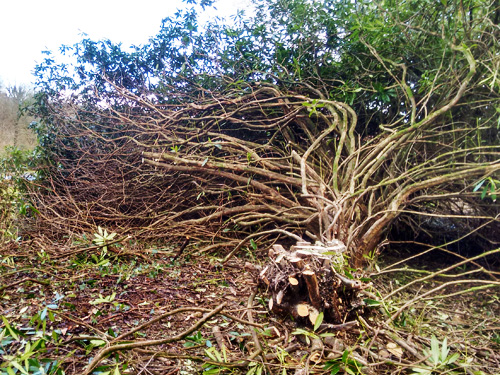
Dispersal
Rhododendron seeds are very small and are dispersed by the wind. Each flower head has the potential to produce between 3000-7000 seeds, so a large bush can produce several million seeds per year. Given the high numbers of seeds produced, it only needs a small proportion to germinate successfully. Established seedlings succeed best in disturbed areas.
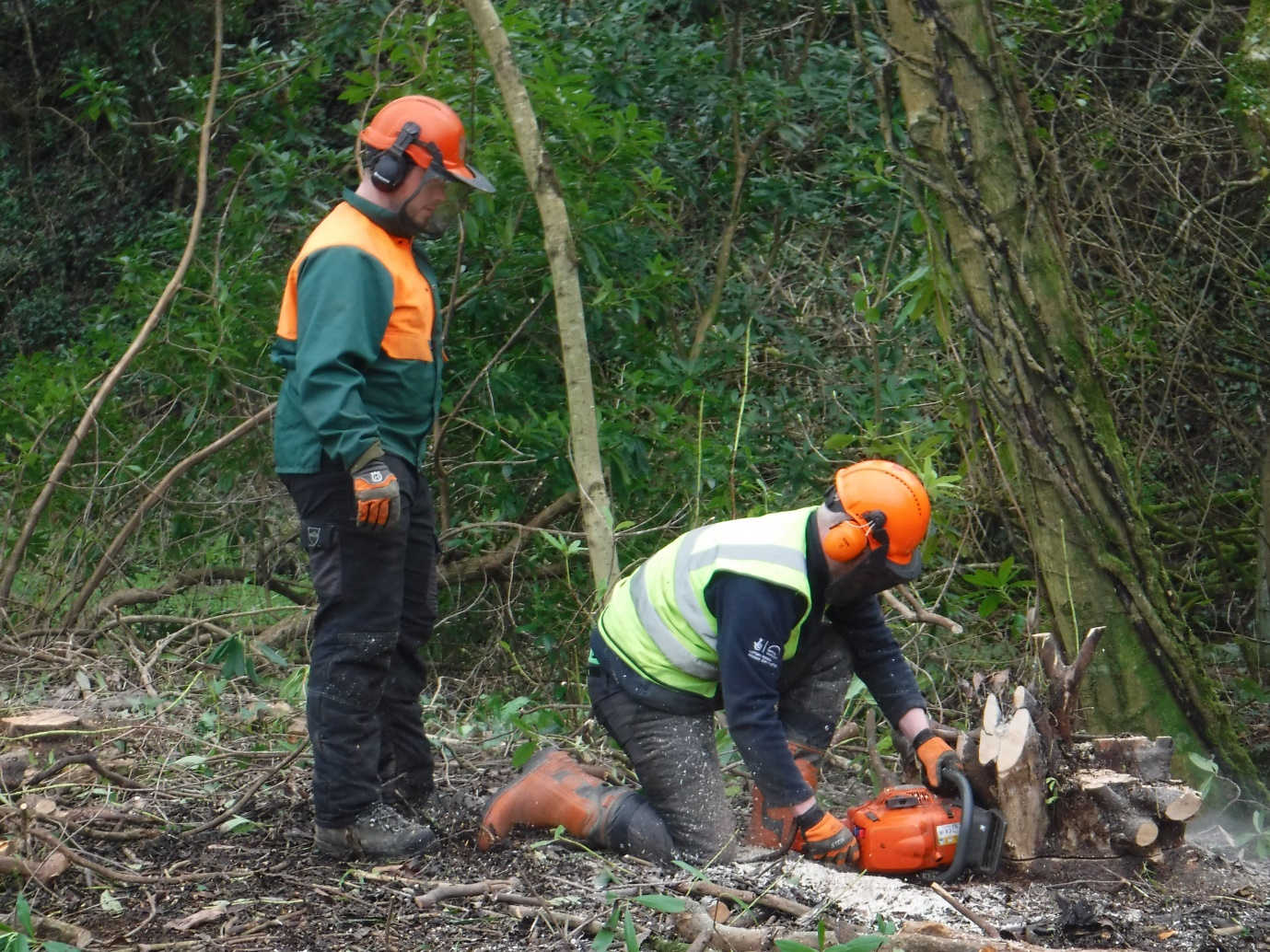
Control strategies
If established stands are not kept in check, they will expand into adjacent areas, eliminating rapidly the majority of native plant species. For removal, all above ground growth must be cut, sawed or pruned. Where possible, the woody material can be chipped and used as mulch, and the green material rotted down into compost for use at a later date.
The stumps can be removed or treated with an injection of herbicide. If the latter option is preferred, a follow-up management plan over a three to five year period is required for any subsequent regrowth of plant material. If rhododendron ponticum or rhododendron maximum is present in your garden or on your land, please consider the wider health of woodlands in your area.
